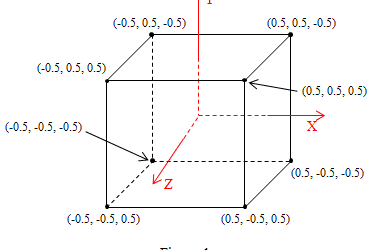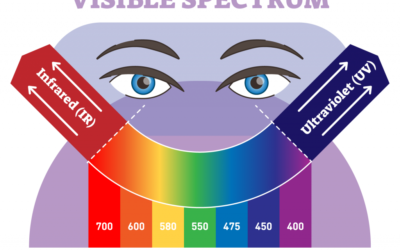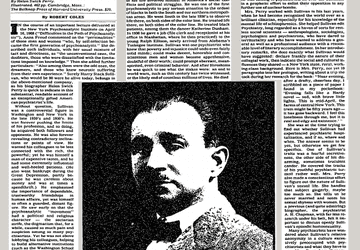How Edward Teyber’s Revolutionary Approach Transformed My Journey from Anxious Student to Confident Therapist
 I still remember sitting in my social work school classroom, frantically taking notes on CBT protocols and DBT worksheets, feeling increasingly overwhelmed with each passing lecture. The more theoretical models and manualized treatments I learned, the more confused I became about how I would ever actually sit down with a real human being and do therapy. My notebooks were filled with techniques and interventions, but I had no idea how to put it all together into something that resembled actual therapeutic work.
I still remember sitting in my social work school classroom, frantically taking notes on CBT protocols and DBT worksheets, feeling increasingly overwhelmed with each passing lecture. The more theoretical models and manualized treatments I learned, the more confused I became about how I would ever actually sit down with a real human being and do therapy. My notebooks were filled with techniques and interventions, but I had no idea how to put it all together into something that resembled actual therapeutic work.
Then I discovered Edward Teyber’s “Interpersonal Process in Therapy: An Integrative Model,” and everything changed. This wasn’t just another therapy textbook filled with abstract concepts and rigid protocols. It was a revelation that brought psychodynamic concepts from Freud and Jung into modern, accessible language that actually made intuitive sense. More importantly, it showed me how therapy really works – not through following a manual, but through the living, breathing relationship between therapist and client.
What Is Interpersonal Process Therapy Really About?
The interpersonal process approach represents a fundamental shift in how we think about therapeutic change. Unlike the structured protocols of CBT or the skills-based modules of DBT, Teyber’s model brings together cognitive-behavioral, family systems, and psychodynamic theories into one cohesive framework that centers on the therapeutic relationship itself. This integration isn’t just theoretical – it’s intensely practical, showing exactly how healing happens through human connection.
At its core, the interpersonal process approach recognizes that our earliest relationships create templates for how we experience all subsequent relationships. These internal working models, formed in childhood, continue to shape how we relate to others throughout our lives. The therapeutic relationship becomes a laboratory where these patterns can be observed, understood, and ultimately transformed through new experiences that challenge old expectations.
Understanding the Revolutionary Concept of Process Versus Content
One of Teyber’s most brilliant contributions is his clear distinction between process and content in therapy. Most beginning therapists, myself included, initially focus exclusively on content – what the client is saying, the problems they’re describing, the stories they’re telling. We take notes on their symptoms, their history, their complaints about others. But Teyber shows us that this is only half the picture, and often the less important half.
Process refers to how things unfold between therapist and client in the moment. It’s the way a client apologizes after every statement, or how they pull back just when connection seems possible, or the subtle ways they invite criticism or rejection. Process is the living enactment of their relational patterns happening right there in the therapy room. When a client tells you “everyone always leaves me,” process is noticing how they’re already positioning themselves for you to leave too.
This distinction revolutionized my understanding of therapy. Suddenly, I wasn’t just listening to stories about problems “out there” – I was witnessing and participating in the very patterns that created those problems. The therapy room became a microcosm of the client’s relational world, and our interaction became the primary vehicle for change.
The Heart of Change: Corrective Emotional Experience
Teyber brilliantly updates Alexander and French’s concept of corrective emotional experience for modern practice. The goal of the interpersonal process approach is to help clients modify their early maladaptive schemas or internal working models by providing them with experiential or in vivo re-learning. This isn’t about giving advice or teaching skills – it’s about providing a lived experience that fundamentally challenges what the client has come to expect from relationships.
When a client who expects criticism experiences genuine curiosity instead, when someone who anticipates abandonment encounters consistent presence, when a person who fears their emotions will overwhelm others finds their feelings welcomed and contained – these moments of surprised relief are where real change happens. The therapist’s different response disrupts the client’s anticipated script and opens new possibilities for relating.
These corrective experiences must be genuine – they can’t be techniques or strategies. They emerge from the therapist’s authentic way of being with the client, which is why Teyber emphasizes that therapy must authentically involve you as a person, not just as a technician applying interventions.
Establishing a Working Alliance: Beyond Rapport
The working alliance is far more than just building rapport or being nice. It’s a collaborative relationship where both parties agree on the goals of therapy, the tasks involved in reaching those goals, and develop an emotional bond that can withstand the inevitable challenges of the work. Teyber provides clear guidelines for effective (and ineffective) ways to establish this alliance.
Creating a strong working alliance involves using process comments to make the implicit explicit. Instead of letting important dynamics remain unspoken, the therapist gently draws attention to what’s happening between them. “I notice you’re being very careful about what you share with me” or “It seems like you’re working hard to make sure I’m not disappointed in you.” These observations invite collaborative exploration rather than defensive explanation.
The alliance must also be strong enough to weather ruptures – those moments of misunderstanding, disappointment, or conflict that inevitably arise. Teyber shows how repairing these ruptures, rather than avoiding them, often becomes the most powerful corrective experience. When a therapist can acknowledge their own contribution to a misunderstanding and work through it with the client, it provides a new model for how relationships can survive and even deepen through conflict.
Honoring Resistance: A Compassionate Reframe
One of the most helpful shifts Teyber offers is his reframing of resistance. Rather than seeing it as something to overcome or break through, he helps us understand resistance as the client’s attempt to protect themselves from anticipated pain. When we honor resistance instead of fighting it, we align with the client’s healthy self-protective instincts while gently exploring what they’re protecting themselves from.
Resistance takes many forms – the client who intellectualizes to avoid feeling, the person who comes late to avoid full engagement, the individual who fills sessions with stories about others to avoid focusing on themselves. Teyber teaches us to be curious about these patterns rather than frustrated by them. What is this client protecting? What do they fear will happen if they let their guard down?
This compassionate stance toward resistance paradoxically makes it more likely to soften. When clients feel understood rather than pushed, when their defenses are respected rather than attacked, they often naturally begin to lower them. The therapist’s patience and understanding becomes yet another corrective experience – perhaps the first time someone has respected their need for protection.
Working with the Affective Constellation: Anger, Sadness, Guilt, and Shame
One of Teyber’s most clinically useful contributions is his understanding of how emotions cluster together in predictable patterns. He identifies key affective constellations – particularly the anger-sadness-shame and sadness-anger-guilt patterns – that help therapists understand and work with complex emotional presentations.
Many clients lead with one emotion while defending against others. Some clients readily express anger but cannot access the hurt underneath. Others cry easily but cannot feel their anger. Still others are consumed by guilt that masks their legitimate anger at having been wronged. Understanding these patterns helps therapists know what to listen for and how to help clients access the full range of their emotional experience.
Whereas some clients lead with their anger and defend against their hurt, others lead with their sadness and avoid their anger. This isn’t just an academic observation – it’s a practical roadmap for intervention. When a client presents with chronic sadness, the therapist might gently explore what anger might be present. When someone is consumed by guilt, looking for the anger they feel guilty about often proves fruitful.
The shame-anger-sadness constellation is particularly important for new therapists to understand. In other words, clients break the identification with the attachment figure who was rejecting or contemptuous and, instead of despising themselves in the same way the caregiver once did, clients come to adopt the same compassionate or empathic stance toward themselves and their own humanness that the therapist provided. Working with shame requires the therapist to provide a consistently compassionate presence that gradually becomes internalized, replacing the critical voice the client carries from early relationships.
The Complexity of Triangulation in Therapy
Teyber’s exploration of triangulation adds another crucial dimension to understanding interpersonal dynamics. Triangulation occurs when anxiety in a two-person relationship gets managed by involving a third party. In families, this might look like a mother complaining to her daughter about the father, or parents focusing on a “problem child” to avoid addressing their marital issues.
Understanding triangulation is essential because clients often try to recreate these patterns in therapy. They might try to get the therapist to take sides against someone in their life, or they might talk exclusively about third parties to avoid direct engagement with the therapist. Some clients even try to triangulate the therapist with previous therapists, setting up comparisons and competitions.
The interpersonal process approach helps therapists recognize these triangulation attempts without getting pulled into them. Instead of taking sides or getting caught up in stories about others, the therapist can make process comments that gently redirect attention to what’s happening in the room. “I notice we spend a lot of time talking about your mother. I’m wondering what it’s like for you to talk directly with me about yourself?”
Triangulation also helps explain why family-of-origin work is so important. Many clients learned early that direct communication was dangerous or impossible, that managing relationships required indirect maneuvers and third-party involvement. The therapeutic relationship offers a chance to experience something different – a relationship where direct communication is not only possible but welcomed.
Moving from External to Internal Focus
One of the most challenging shifts for both therapists and clients is moving from an external focus (what others need to change) to an internal focus (what the client can do differently). Teyber provides specific techniques for facilitating this shift without blaming or shaming the client.
Clients often come to therapy with a list of complaints about others – if only their partner would change, if only their boss was different, if only their parents had been better. While these complaints may be entirely valid, therapy can’t change other people. The art lies in helping clients discover their own agency without dismissing their legitimate grievances.
This shift happens gradually through careful questioning and reflection. “Your boss does sound very critical. I’m curious about how you respond when that happens?” or “It sounds like your partner’s behavior is really hurtful. What options do you see for yourself in this situation?” The therapist validates the client’s experience while gently directing attention to what’s within their control.
The Three Interpersonal Coping Strategies
Teyber identifies three primary interpersonal coping strategies that clients develop in childhood and continue throughout life: moving toward, moving away, and moving against. Understanding these patterns helps therapists recognize what’s happening in the therapeutic relationship and what the client needs for a corrective experience.
Moving toward involves people-pleasing, approval-seeking, and compliance. These clients often apologize excessively, worry about disappointing the therapist, and have difficulty expressing disagreement or negative feelings. They learned early that connection required self-sacrifice, that their own needs were less important than keeping others happy.
Moving away involves withdrawal, emotional distance, and self-reliance. These clients might intellectualize, miss sessions, or maintain a pleasant but superficial engagement. They learned that closeness was dangerous, that the only way to stay safe was to need no one.
Moving against involves control, criticism, and domination. These clients might challenge the therapist’s competence, try to direct the therapy, or become angry when feeling vulnerable. They learned that the only way to avoid being hurt was to maintain power over others.
Understanding these patterns helps therapists provide the specific corrective experience each client needs. The moving toward client needs to experience that they matter even when not pleasing others. The moving away client needs to discover that connection doesn’t always lead to pain. The moving against client needs to learn that vulnerability doesn’t always result in attack.
Process Comments: The Primary Tool
Process comments are observations about what’s happening in the moment between therapist and client. They’re the primary tool for making the interpersonal process approach come alive in the therapy room. Yet for beginning therapists, making process comments can feel terrifying – what if we offend the client or get it wrong?
Teyber shows us that process comments can be gentle, tentative, and collaborative. They’re not pronouncements from on high but invitations to explore together. “I’m noticing something and I’m wondering if you’re aware of it too…” or “Can we pause for a moment and look at what just happened between us?” These comments create space for metacommunication – talking about how we’re talking.
The power of process comments lies in their immediacy. Instead of talking about patterns in abstract terms, the therapist and client can examine them as they’re happening. When a client says “I’m probably boring you” and the therapist responds with “I notice you often worry about my reaction to you. What’s that like for you?” they’re not just discussing the client’s fear of boring others – they’re working with it in real time.
Working Through Transference and Countertransference
The contemporary approach to transference that Teyber presents is remarkably practical and non-pathologizing. Rather than seeing transference as distortion or projection, he frames it as the natural human tendency to expect new relationships to follow familiar patterns. We all do this – it’s how we navigate the social world.
In therapy, transference becomes useful information. When a client relates to the therapist as a critical parent, potential abandoner, or someone who needs caretaking, it reveals their internal working model of relationships. The therapist’s job isn’t to interpret this from a position of objective truth but to explore it collaboratively with the client.
Countertransference – the therapist’s emotional reactions to the client – is equally valuable. therapists can manage their own “client-induced” and “therapist-induced” countertransference reactions more effectively and be better prepared to provide clients with a corrective response. Teyber normalizes countertransference while teaching therapists to use it as information rather than act on it impulsively.
When a therapist feels bored, irritated, or protective, these reactions often tell us something important about the client’s relational patterns. The client who evokes boredom might be keeping themselves hidden. The one who irritates might be pushing others away. The client who evokes protection might be presenting as more fragile than they really are. Understanding these reactions helps therapists respond differently than others typically do.
The Importance of Therapist Authenticity
Throughout the book, Teyber emphasizes that effective therapy requires the authentic involvement of the therapist as a person. This doesn’t mean being unprofessional or boundaryless – it means bringing your genuine self to the encounter rather than hiding behind a therapeutic persona.
For beginning therapists, this can be anxiety-provoking. We often believe we need to be perfectly neutral, constantly insightful, unwaveringly calm. Teyber liberates us from this impossible standard. You will make mistakes. Your sessions will not be perfect. You will always have something to discuss in supervision. This isn’t failure – it’s the reality of genuine human engagement.
Authenticity means acknowledging when you don’t understand something, apologizing when you miss the mark, and being affected by your clients’ stories. It means having a real relationship within appropriate boundaries. This authenticity itself becomes a corrective experience for clients who have known only relationships that required masks and pretense.
Finding Your Own Voice as a Therapist
One of the greatest gifts of Teyber’s approach is that it doesn’t require you to become someone you’re not. Unlike approaches that demand specific techniques or interventions, the interpersonal process model allows for tremendous individual variation. A naturally warm therapist and a more reserved one can both practice this approach effectively – they’ll just do it differently.
The book allows for the beginning therapist to establish their own style while incorporating the components of the interpersonal process. This permission to be yourself while learning the craft is liberating for new therapists who worry they need to adopt a particular therapeutic persona.
Your own personality, cultural background, and life experiences become resources rather than obstacles. The key is awareness – understanding your own patterns, triggers, and tendencies so you can use them thoughtfully rather than react automatically. This self-awareness develops through supervision, personal therapy, and honest reflection on your work.
Integration with Other Approaches
While the interpersonal process approach stands on its own, one of its greatest strengths is how well it integrates with other therapeutic modalities. Teyber shows how cognitive-behavioral interventions can be enhanced by attention to process, how psychodynamic insights can be made more immediate and experiential, and how family systems perspectives can inform individual therapy.
For therapists trained in CBT, adding the interpersonal process dimension means noticing not just what thoughts the client has but how they share them with you. Do they present their automatic thoughts as facts? Do they use cognitive techniques to avoid emotional connection? How does their way of thinking serve interpersonal functions?
For those with psychodynamic training, Teyber’s approach makes abstract concepts immediately practical. Instead of talking about internal objects or discussing the past, the therapist can work with these dynamics as they emerge in the present relationship. The past matters because it shaped the patterns, but change happens in the present.
Cultural Considerations and Adaptations
Teyber’s model is remarkably adaptable across cultural contexts because it emphasizes understanding each client’s unique relational world rather than imposing predetermined norms. The therapist’s job is to understand what relationships mean in the client’s cultural context, what patterns are culturally syntonic versus personally problematic.
For example, what looks like unhealthy enmeshment in one cultural context might be appropriate family closeness in another. What seems like problematic deference might be culturally valued respect. The interpersonal process approach helps therapists explore these patterns with curiosity rather than judgment, always keeping the client’s own goals and values central.
This cultural humility extends to the therapeutic relationship itself. Different clients will need different kinds of therapeutic relationships based on their cultural backgrounds and personal histories. Some need more formality, others more warmth. Some are comfortable with direct emotional expression, others need more indirect approaches. The therapist’s flexibility and responsiveness to these differences becomes part of the corrective experience.
When Therapy Becomes Transformative
The most powerful moments in therapy often can’t be planned or scripted. They emerge from the authentic meeting of two people, one of whom is suffering and seeking help, the other offering their full presence and professional skill in service of healing. Teyber’s approach creates the conditions for these transformative moments without trying to manufacture them.
These moments might look like a client finally crying after years of numbness, not because the therapist applied a technique but because they finally feel safe enough. Or a chronically angry client softening into vulnerability because the therapist didn’t retaliate or withdraw in the face of their hostility. Or someone who has always pleased others stating a genuine preference for the first time.
What makes these moments transformative isn’t just the emotional release or the new behavior – it’s that they happen within a relationship. The client isn’t alone with their pain or their growth. They’re seen, acknowledged, and accompanied. This relational context is what allows the experience to update their internal working models of what’s possible between people.
The Journey from Confusion to Clarity
Looking back at my own journey from that anxious social work student to a confident practitioner, I can see how Teyber’s framework gave me a way to understand what I was already intuiting but couldn’t articulate. Therapy isn’t about applying techniques to disorders – it’s about two people creating something together that allows one of them to heal and grow.
The interpersonal process approach taught me to trust the relationship, to pay attention to what was happening between us rather than just focusing on symptoms or goals. It showed me that my reactions and feelings weren’t obstacles to overcome but valuable information to understand. Most importantly, it gave me permission to be a real person in the room while maintaining professional boundaries.
For students currently struggling with the same confusion I once felt, drowning in theories and techniques without understanding how they fit together, Teyber offers a life raft. His approach doesn’t replace what you’re learning about CBT, DBT, or other modalities – it provides a framework for understanding how all therapy works at the relational level.
The Ongoing Journey
Mastering the interpersonal process approach isn’t something that happens after reading one book, no matter how comprehensive. It’s a career-long journey of deepening your capacity for presence, attunement, and authentic engagement. Every client teaches you something new about human relationships and the myriad ways people protect themselves from pain while longing for connection.
The beautiful thing about this approach is that it grows with you. As you develop as a person and a therapist, your capacity to provide corrective experiences expands. Your own therapy, supervision, and life experiences all contribute to your ability to be present with clients in ways that facilitate healing.
Even now, years after first discovering Teyber’s work, I return to it regularly. Each reading reveals new layers, new understanding, new applications. The concepts that once seemed revolutionary have become integrated into my way of being with clients, yet they never become routine or mechanical. Each therapeutic relationship remains unique, each corrective experience emerges fresh from the specific meeting of two particular people.
A Final Reflection on What Really Matters
If there’s one thing Teyber’s work has taught me, it’s that the healing power of therapy lies not in our techniques or theoretical knowledge but in our capacity to be genuinely present with another human being’s pain and growth. All our training and theory serves to support this fundamental human encounter.
When I sit with a client now, I’m not anxiously running through CBT protocols or trying to remember DBT skills. I’m present, curious, and engaged with this particular person in this particular moment. I’m noticing what happens between us, how old patterns emerge, where opportunities for new experiences arise. I’m bringing my whole self to the encounter while maintaining the boundaries that keep it therapeutic rather than social.
This is what Teyber offers – not just another approach to add to your collection but a way of understanding how all therapy works when it works. It’s an invitation to stop hiding behind techniques and theories and to engage authentically with the profound privilege of accompanying other human beings on their journey toward healing.
For any student or therapist who has ever wondered “How do I actually do this?” Teyber provides the answer: You do it by being fully present, professionally bounded, and genuinely engaged with the unique human being sitting across from you. You do it by understanding that their patterns will emerge in your relationship, and that your different response can open new possibilities. You do it by bringing your training, your intuition, and your humanity together in service of their growth.
That’s the gift of the interpersonal process approach – it shows us that therapy is both simpler and more profound than we imagined. It’s not about having the right technique for every problem. It’s about understanding how human beings heal in relationships and being able to provide the kind of relationship that makes healing possible.
interpersonal process therapy, Edward Teyber, integrative therapy model, therapeutic relationship, corrective emotional experience, psychotherapy integration, clinical psychology, counseling techniques, working alliance, transference and countertransference, process comments, resistance in therapy, emotional triangulation, affective constellation, psychodynamic therapy.



























0 Comments